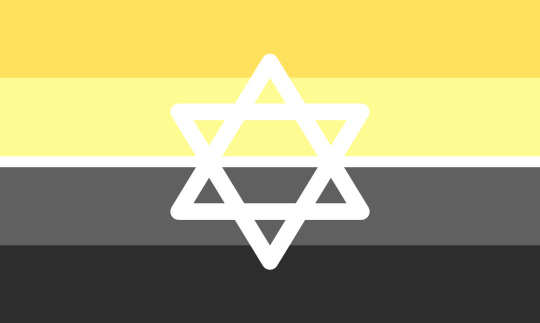#lmk if i can make the big explanatory paragraphs more accessible? i didnt want it to be hugelong but i had a lot to say.
Text






in order from top->bottom and left->right:
zachar, ay'lonit, nekevah
tumtum, androgynos, saris
under the cut i'll provide more information on these identities and their place in judaism, including what makes a person one of these genders.
goyim are ok to reblog this if you want to share it with jewish people, but if you start messing around with these or try to give any commentary on it i will fuck your whole life
zachar is roughly equivalent to "male," and nekevah is to "female." tumtum is neither, lacking identifying gendered characteristics, and androgynos is both, having characteristics of both a zachar and a nekevah. ay'lonit is someone who was identified a nekevah a birth, but later gained traits associated with a zachar, and saris was identified a zachar at birth and later gained a nekevah's traits.
these are jewish genders/sexes, described in jewish religious & legal texts. they can be "hamah," through natural development, or "adam," through human intervention, e.g. a "saris adam" could be assigned male at birth but transition later in life, while a "saris hamah" was assigned male but later naturally developed sex characteristics commonly associated with someone assigned female. so, in short, just like how many conceive of "male" and "female" as something you can be born into or transition into, you can be born into or transition into these genders. you can also have your gender change due to an unintentional injury to the hormone regulators/producers that causes a change in the way your body operates.
they are of a physical nature rather than a more internal one: while they contain transgender experience as well as intersex experience, they depend upon your physicality, as noted above, and serve a legal purpose: you can walk into a congregation and tell a rabbi you're tumtum, and the expectations of your halachic practice in that congregation may change. in slightly older parlance you might associate the "adam" side of these experiences more with "transsexual" than "transgender," if you had to make a comparison.
and on that note: they are not the same as and do not smoothly translate into the LGBT community's standard terms and definitions surrounding sex & trans and nonbinary identity, and are exclusive to the cultural context of judaism. the jewish people have a six-aspect (or arguably ten- or twelve-aspect, depending on how you separate adam and hamah and whether you apply them to zachar and nekevah) gender system where the genders other than zachar and nekevah are on equal cultural standing and not "nonbinary" because we do not have a binary, like the exclusive "male" and "female" western-christian system.
#flags#my flags#genders#judaism#zachar#nekevah#ay'lonit#saris#tumtum#androgynos#jewish gender#lmk if i can make the big explanatory paragraphs more accessible? i didnt want it to be hugelong but i had a lot to say.#adhd unstoppable force (cant shut the fuck up) vs immovable object (cant read my own massive paragraph blocks)
120 notes
·
View notes